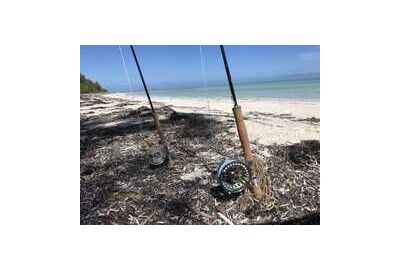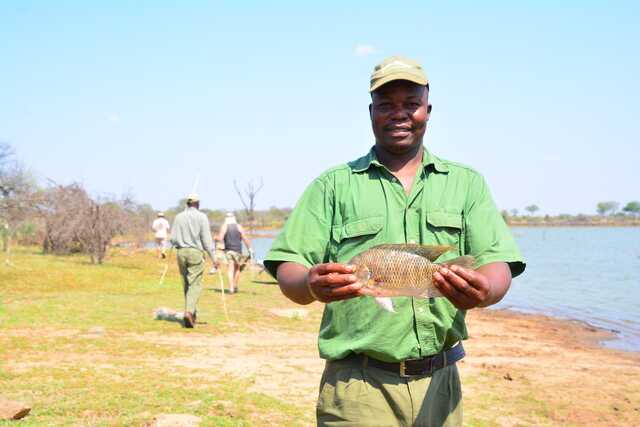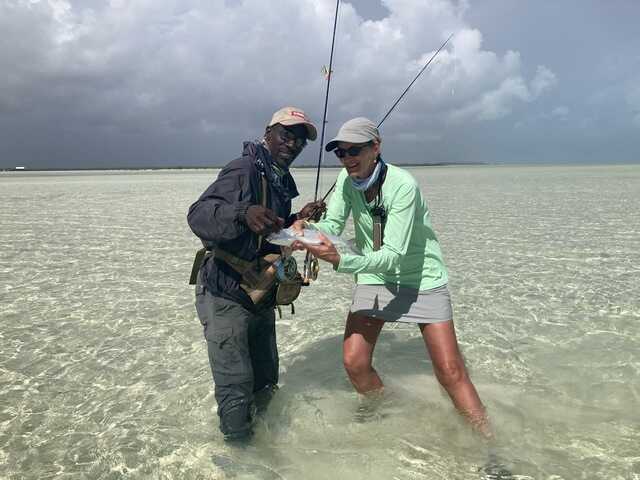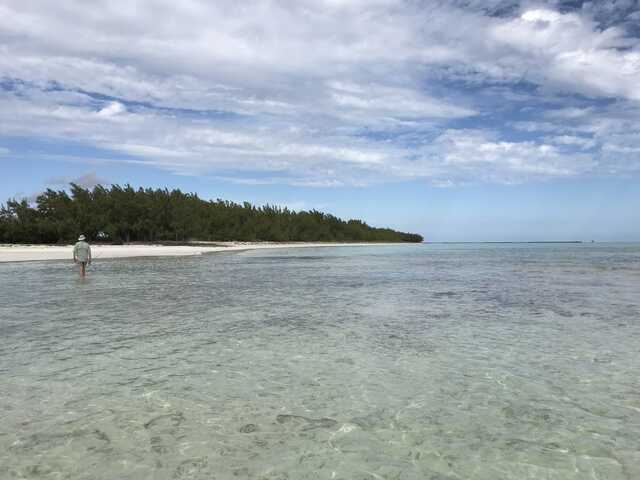My wife likes to escape the Alberta cold each winter, so we typically head south to where she can kick back and enjoy the sun and a little relaxation. She also wants to break free from everyday chores, so she prefers an all-inclusive resort. And while I, too, enjoy the sun, I can’t just sit around sipping margaritas for two weeks, so for years I just went along “making the best of it.”
One year, staring at the azure ocean, I determined I was going to make better use of my location and hired a fishing guide for the day. Not one of those deep-sea excursions, mind you, but someone whose specialty is inshore fishing. The tidal flats common to nearly all of Mexico and the Caribbean are teeming with a variety of fish, from bonefish and permit, to jacks, snook, barracuda, baby tarpon and more. My objective that day wasn’t to catch fish, necessarily, but to learn enough about how and where to find fish in these unfamiliar waters that I could catch them on my own.
And to be clear, fishing as a vacation add-on isn’t restricted to winter vacations only. Just about anywhere you travel will be near a fish-bearing body of water that can add a little spice to your holiday or relieve that itch to be more active.
Now, all these years later, DIY fishing has become a regular part of our getaways, especially in winter, and while we don’t always catch a lot of fish, those we do make it all worthwhile. Here are some tips to help you get started.
Hire a Guide
Whenever we visit a new destination we hire a guide for a half or full day. It shortens your learning curve significantly; they’ll teach you where and when to look for fish, how to target them and what lures or tackle to use. We fly-fish almost exclusively, but it’s really no different if you use spinning gear. We can’t afford a guide for more than a day or two, and would rather fish on our own in any case, but the benefits of getting local instruction is worth every nickel.
Understand Tides
The basis of what you need to understand is that there are tides, and that they affect fish behaviour and movements. Many fish, bonefish being a prime example, are best fished on an incoming tide, so it can help to understand the timing of the high and low tides each day. Understanding tides is also a safety issue—you want to be sure that you don’t wade into an area where you’ll be trapped when the tide rises next. You can easily find tide tables for wherever you are online.
Learn What Fish to Expect
Fish in foreign destinations are no different than those we have at home in that they don’t all prefer the same habitat. Some southern species like the cover of the mangroves, while others prefer more open water. When you’re on a DIY trip, without benefit of a boat, you may be limited in the type of water you can access. Understanding what species might inhabit that area also goes a long way to helping you determine what tackle, flies and lures to use.
Do Your Homework Before You Go
The internet is full of advice and information that can help turn any vacation destination into a fisherman’s paradise. Last October I was in Zimbabwe with friends. Most of the time we were watching and taking photos of mammals and birds found in the protected, remote areas of that country. Before leaving home, however, a little research revealed that there was a large impoundment that held fish near where we’d be visiting. Upon arriving we tracked down a couple fishing rods and spent a wonderful day catching yellowfish—they’re not particularly large or great fighters, but they proved to be difficult to fool, making for great sport.
Whenever my wife and I travel in winter we do a little investigating before we go and invariably discover some accessible waters near where we’re staying that offer a better-than-even chance of hooking a few fish.
Dress for Success
The heat can be punishing in many warm weather winter destinations, even more so when you’re wading the flats with the midday sun reflecting off the water. To avoid severe sunburn, or even heatstroke, wear long-sleeved t-shirts with hoods that offer UPF 50+ or greater protection; the back of your neck, in particular, must be protected. The latest craze is buffs. Their stretchy, microfiber polyester material is designed to wick moisture at the surface for lightweight and comfortable protection from both sun and wind, and they can be worn comfortably as a neckerchief, scarf, headband or balaclava. They also offer protection from flies and other bugs when needed.
Long-billed hats are a must-have, of course, and some folks elect to wear gloves with built-in UPF sun protection. Polarized sunglasses are also necessary; besides protecting you from the sun, they allow you to more easily see fish in the water. Give thought to your footwear, too. Depending upon where you’ll be fishing, you may find that soft soles are sufficient. If you’re fishing waters with coral, or good numbers of stingrays, however, you may want a little more protection.
Fishing the Salt
Your first attempts to fish saltwater can be eye-opening. Beyond the tides, you may also have waves to deal with, and you’re almost guaranteed to have winds. This makes casting challenging, especially with fly tackle. If you’re a fly angler, force yourself to practice at home in windy conditions before heading south. Extended casting distances aren’t always required, but accuracy is, as saltwater fish are nearly always on the move and you’ll need to get your fly in front of them to have any hope of a hook-up.
Fishing, even for a couple days, has added immeasurably to my enjoyment of vacations. Adopt a novice’s mindset, do your research before leaving home, listen carefully to all who offer advice, hire a guide for a day, laugh at your initial ineptitude, and soon you’ll discover that destination fishing will have you yearning to go back, again and again.










